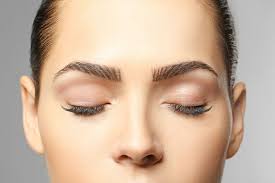Source :- capemaycountyherald.com
Sagging eyelids don’t just make you look older. They can affect your vision. Over time, our skin stretches, sags, creases and folds. While it’s a natural effect of aging, it can be a medical problem when it happens to the eyelids. Sagging upper eyelids can severely limit peripheral, or side vision.
Fortunately, there’s medical help in the form of eyelid surgery. Also known by the medical term, blepharoplasty, eyelid surgery is an outpatient procedure that removes excess tissue and lifts the skin. At Atlantic Eye Center, it’s a procedure done without a knife.
“We use radio frequency to excise the excess skin, not a scalpel,” explained Dr. Michael Caruso, ophthalmic physician, and surgeon at Atlantic Eye Center. “That’s an important distinction because there is little to no bleeding.”
The causes of sagging upper eyelids:
There are many causes for sagging upper eyelids. There may be a genetic predisposition in your family. Sometimes lifestyle and your environment can cause the problem. For example, people who have worked outside for many years may experience drooping eyelids.
Age is another contributing factor. Over the years, the movements we make with our eyes—blinking, squinting and facial expressions—take their toll.
Facial aging starts with “crow’s feet,” wrinkles on the side of the eyes. Then, the wrinkles start to extend across the lower eyelid and into the upper eyelid. The skin there becomes lax; the muscles weaken.
Eventually, the eyes have a hooded appearance. The lower lids also sag, creating “permanent” bags, causing the person to appear tired all the time. At first, you may not notice that sagging upper eyelids interfere with your vision. It is a gradual process that happens over time.
Diagnosis and treatment:
Most patients request their lids be corrected because their eyes look closed and tired. They also are losing their superior visual fields. This is described as hooding. They may mention that the skin on the upper lid presses right on their lashes.
Dr. Caruso will conduct a visual field test “with and without tape.” It’s a map of the peripheral vision using a machine that measures the visual field.
Patients are tested twice. The second time, the lids are taped up, simulating post-surgical results. Dr. Caruso also takes ocular photos of the eyes individually and together.
If the medical diagnosis for sagging upper eyelids is made, the office contacts the patient’s insurance to get clearance for eyelid surgery. Insurance will cover the operation as long as the problem is interfering with a patient’s vision.
The actual surgical procedure is not lengthy and takes just about 20 minutes. Patients are sedated and require transportation home. A certain degree of swelling is normal. Patients are given an antibiotic ointment and instructions for applying an icepack. They are back to work and their normal activities within a couple of days.
White dissolvable sutures are used minimizing any scarring. There is a post-op appointment five to seven days following the procedure. A second post-op appointment is done to evaluate the final results. There is no pain post-op.
When eyelid surgery is not recommended:
Not everyone is a candidate for eyelid surgery, however. Good health is a prerequisite.
